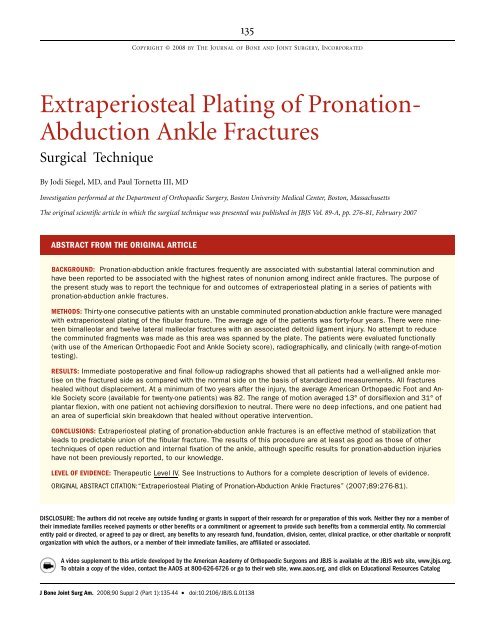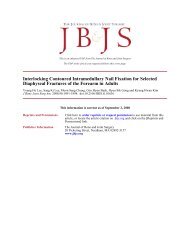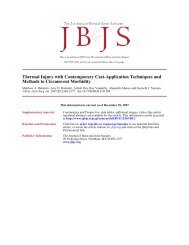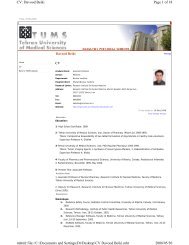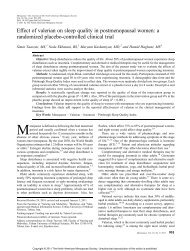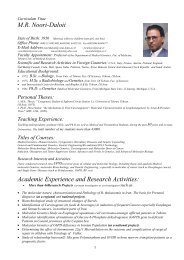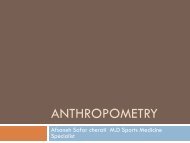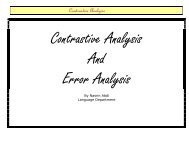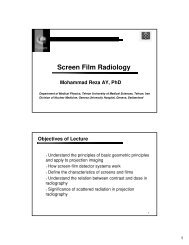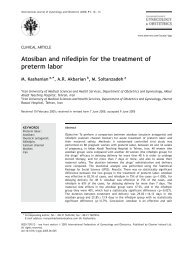Extraperiosteal Plating of Pronation-Abduction Ankle Fractures
Extraperiosteal Plating of Pronation-Abduction Ankle Fractures
Extraperiosteal Plating of Pronation-Abduction Ankle Fractures
You also want an ePaper? Increase the reach of your titles
YUMPU automatically turns print PDFs into web optimized ePapers that Google loves.
135<br />
COPYRIGHT © 2008 BY THE JOURNAL OF BONE AND JOINT SURGERY, INCORPORATED<br />
<strong>Extraperiosteal</strong> <strong>Plating</strong> <strong>of</strong> <strong>Pronation</strong>-<br />
<strong>Abduction</strong> <strong>Ankle</strong> <strong>Fractures</strong><br />
Surgical Technique<br />
By Jodi Siegel, MD, and Paul Tornetta III, MD<br />
Investigation performed at the Department <strong>of</strong> Orthopaedic Surgery, Boston University Medical Center, Boston, Massachusetts<br />
The original scientific article in which the surgical technique was presented was published in JBJS Vol. 89-A, pp. 276-81, February 2007<br />
ABSTRACT FROM THE ORIGINAL ARTICLE<br />
BACKGROUND: <strong>Pronation</strong>-abduction ankle fractures frequently are associated with substantial lateral comminution and<br />
have been reported to be associated with the highest rates <strong>of</strong> nonunion among indirect ankle fractures. The purpose <strong>of</strong><br />
the present study was to report the technique for and outcomes <strong>of</strong> extraperiosteal plating in a series <strong>of</strong> patients with<br />
pronation-abduction ankle fractures.<br />
METHODS: Thirty-one consecutive patients with an unstable comminuted pronation-abduction ankle fracture were managed<br />
with extraperiosteal plating <strong>of</strong> the fibular fracture. The average age <strong>of</strong> the patients was forty-four years. There were nineteen<br />
bimalleolar and twelve lateral malleolar fractures with an associated deltoid ligament injury. No attempt to reduce<br />
the comminuted fragments was made as this area was spanned by the plate. The patients were evaluated functionally<br />
(with use <strong>of</strong> the American Orthopaedic Foot and <strong>Ankle</strong> Society score), radiographically, and clinically (with range-<strong>of</strong>-motion<br />
testing).<br />
RESULTS: Immediate postoperative and final follow-up radiographs showed that all patients had a well-aligned ankle mortise<br />
on the fractured side as compared with the normal side on the basis <strong>of</strong> standardized measurements. All fractures<br />
healed without displacement. At a minimum <strong>of</strong> two years after the injury, the average American Orthopaedic Foot and <strong>Ankle</strong><br />
Society score (available for twenty-one patients) was 82. The range <strong>of</strong> motion averaged 13° <strong>of</strong> dorsiflexion and 31° <strong>of</strong><br />
plantar flexion, with one patient not achieving dorsiflexion to neutral. There were no deep infections, and one patient had<br />
an area <strong>of</strong> superficial skin breakdown that healed without operative intervention.<br />
CONCLUSIONS: <strong>Extraperiosteal</strong> plating <strong>of</strong> pronation-abduction ankle fractures is an effective method <strong>of</strong> stabilization that<br />
leads to predictable union <strong>of</strong> the fibular fracture. The results <strong>of</strong> this procedure are at least as good as those <strong>of</strong> other<br />
techniques <strong>of</strong> open reduction and internal fixation <strong>of</strong> the ankle, although specific results for pronation-abduction injuries<br />
have not been previously reported, to our knowledge.<br />
LEVEL OF EVIDENCE: Therapeutic Level IV. See Instructions to Authors for a complete description <strong>of</strong> levels <strong>of</strong> evidence.<br />
ORIGINAL ABSTRACT CITATION:“<strong>Extraperiosteal</strong> <strong>Plating</strong> <strong>of</strong> <strong>Pronation</strong>-<strong>Abduction</strong> <strong>Ankle</strong> <strong>Fractures</strong>” (2007;89:276-81).<br />
DISCLOSURE: The authors did not receive any outside funding or grants in support <strong>of</strong> their research for or preparation <strong>of</strong> this work. Neither they nor a member <strong>of</strong><br />
their immediate families received payments or other benefits or a commitment or agreement to provide such benefits from a commercial entity. No commercial<br />
entity paid or directed, or agreed to pay or direct, any benefits to any research fund, foundation, division, center, clinical practice, or other charitable or nonpr<strong>of</strong>it<br />
organization with which the authors, or a member <strong>of</strong> their immediate families, are affiliated or associated.<br />
A video supplement to this article developed by the American Academy <strong>of</strong> Orthopaedic Surgeons and JBJS is available at the JBJS web site, www.jbjs.org.<br />
To obtain a copy <strong>of</strong> the video, contact the AAOS at 800-626-6726 or go to their web site, www.aaos.org, and click on Educational Resources Catalog<br />
J Bone Joint Surg Am. 2008;90 Suppl 2 (Part 1):135-44 • doi:10.2106/JBJS.G.01138


